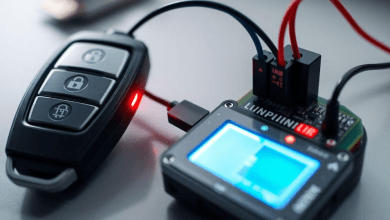
Pets can bring immense joy and comfort to children with autism, offering emotional support, companionship, and opportunities for social and sensory engagement. However, introducing a pet to a child with autism requires careful planning to ensure the experience is positive and stress-free.
Children with autism may have unique sensory preferences and anxieties, making a gradual, thoughtful approach essential.
By following these six simple steps, parents and caregivers can create a safe, nurturing environment where both the child and the pet can form a strong, lasting bond.
1. Prepare Your Child for the New Pet
Wondering how to introduce pets to autistic children? The first step to introducing a pet to a child with autism is preparation. Start by discussing the idea of having a pet and what it means to care for one.
Introduce the type of pet your child will meet using visual aids such as:
- Visual aids
- Books
- Videos
This helps familiarize them with the animal’s behavior, appearance, and sounds, reducing anxiety about the unknown.
For example, if you’re adopting a dog, show your child pictures of dogs wagging their tails or playing fetch. Explain that dogs might bark when excited or approach for affection. This preparation helps set expectations, allowing the child to feel more in control and less surprised by the experience.
Tailor your explanation to your child’s communication level and sensory preferences, ensuring they feel ready for the next steps.
2. Create a Calm and Controlled Environment for the Introduction
A calm and controlled environment is crucial for the first meeting between your child and the pet. Choose a familiar, quiet space where your child feels safe, free from loud noises or distractions. This prevents sensory overload and allows both the child and the pet to feel at ease.
For the initial meeting, have your child sit in a comfortable spot while the pet is brought into the room. Allow the child to observe the pet from a distance without any pressure to interact. This gradual approach helps build trust and reduces the risk of overwhelming the child.
For example, you might let a dog explore the room while your child watches, giving them time to adjust to the animal’s presence. The goal is to create a positive, low-stress experience for both parties.
3. Use Gradual Exposure to Build Comfort
Gradual exposure to pets for kids with autism is essential to make the child feel comfortable around a new pet. Start with short, low-pressure meetings where the child can observe the pet’s behavior and get used to its presence. Gradually increase the length and frequency of these interactions as the child becomes more at ease.
For instance, during the first few meetings, allow the pet to play or rest nearby while the child watches from a distance. Over time, encourage the child to approach the pet at their own pace, perhaps offering a treat or toy.
Avoid rushing or forcing interaction, as this can create anxiety. By allowing the child to take the lead, you empower them to build confidence and trust in their relationship with the pet.
4. Focus on Sensory-Friendly Interactions
Children with autism often have unique sensory preferences, so it’s important to tailor interactions to their comfort level. Some children may enjoy tactile experiences, like petting the animal’s fur, while others may prefer to observe or talk to the pet from a distance.
For example, if your child enjoys touch, encourage them to pet the animal gently, demonstrating how to interact in a way that’s enjoyable for both the child and the pet. If touch is overwhelming, suggest alternative forms of engagement, such as watching the pet move or listening to its sounds.
Activities like tossing a toy for a dog or shaking a rattle for a cat can provide sensory stimulation without requiring close contact. Always be mindful of the child’s reactions, adjusting interactions to ensure they remain positive and enjoyable.
5. Encourage Positive Reinforcement and Patience (150 words)
Building a bond between a child with autism and a pet takes time, so patience is essential. Celebrate even the smallest positive interactions, such as a child smiling at the pet or reaching out to touch it.
Positive reinforcement, such as praise or a small reward, can encourage the child to continue engaging with the pet in a stress-free way.
For example, if your child pets the dog for the first time, acknowledge their bravery and progress with a cheerful, “Great job!” Avoid rushing or forcing interactions, as this can lead to resistance or anxiety. Instead, focus on creating a supportive environment where the child feels safe to explore their relationship with the pet at their own pace.
Remember, the goal is to foster a positive, lasting bond that benefits both the child and the animal.
6. Maintain Consistency and Routine
Consistency and routine are vital for helping a child with autism feel comfortable and connected to their new pet. Establish a daily routine that includes the pet, such as feeding, walking, or playtime. This not only builds familiarity but also gives the child a sense of responsibility and structure.
For instance, involve your child in small, manageable tasks like refilling the pet’s water bowl or brushing its fur. These activities create opportunities for bonding while reinforcing the child’s sense of accomplishment.
Maintaining a predictable schedule helps the child anticipate and prepare for their interactions with the pet, reducing anxiety and fostering a deeper connection. Over time, these routines become a comforting part of the child’s day, strengthening the bond between them and their pet.
Conclusion
Introducing a pet to a child with autism can be a transformative experience, fostering emotional support, social growth, and sensory engagement.
By following these six simple steps—preparing your child, creating a calm environment, using gradual exposure, focusing on sensory-friendly interactions, encouraging positive reinforcement, and maintaining routine—you can ensure a smooth and positive autism therapy pets introduction.
Patience, understanding, and a thoughtful approach will help build a strong, lasting bond between your child and their new furry friend.
To explore how a therapy or emotional support animal could benefit your child, visit Pettable, the best ESA letter service, for resources and guidance on ESA letters and autism therapy pets.




